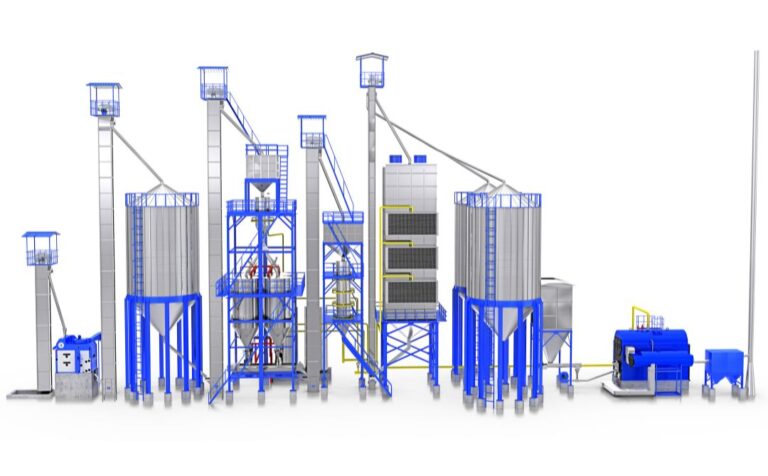Table of Contents
In the heart of every Indian kitchen, rice is a cherished staple, weaving its way into daily meals like steaming dal-chawal or festive biryanis. Among the many varieties, aged rice stands out, prized for its distinct aroma, texture, and flavor that elevate every dish.
For home cooks, chefs, and rice millers across India, understanding what is aged rice and its unique qualities can transform culinary experiences and boost market value. Unlike freshly harvested rice, aged rice benefits include enhanced taste and better cooking performance, making it a favorite in households and restaurants alike.
This blog explores the characteristics of aged rice, how aged rice is prepared, and why it’s a superior choice, offering practical insights to harness its full potential in your kitchen or business.
The Allure of Aged Rice in Indian Cuisine
Rice is a cultural cornerstone, with over 64 million tonnes consumed annually. While fresh rice is readily available, aged rice vs new rice reveals a world of difference in quality and appeal. Aged rice, stored for 6-18 months under controlled conditions, develops a richer flavor and firmer texture, fetching ₹5-20 more per kilogram in markets.
For families, it means tastier meals; for millers, higher profits. Aged rice benefits extend beyond the palate, offering health perks and cooking advantages that make it ideal for dishes requiring distinct grains, like pulao or fried rice. Let’s dive into what makes aged rice more aromatic and how its preparation and properties enhance its value.
What Is Aged Rice and How Is It Prepared?
What is aged rice? It’s rice that’s been stored after harvesting to mature its flavor and texture, and cooking qualities, typically for 6-18 months. Unlike fresh rice, which retains higher moisture (12-14%), aged rice is dried to 10-12% moisture and stored in controlled environments to prevent pests or mold.
How Aged Rice Is Prepared:
- Harvesting: Paddy is cut at 18-22% moisture to preserve grain integrity.
- Drying: Reduced to 10-12% moisture using mechanical dryers, preventing spoilage.
- Storage: Kept in ventilated silos (50-100 tonnes capacity) at 15-25°C, avoiding humidity above 65%.
- Milling: After aging, husked and polished to retain quality rice grains for cooking (70-72% head rice yield).
- Cost: ₹10,000-₹50,000 per 100 tonnes for storage and drying.
5 Benefits of Processing Aged Rice
Aged rice benefits make it a standout choice for Indian cooks and millers. Here’s why it shines:
• Enhanced Flavor and Aroma
What makes aged rice more aromatic? Aging reduces moisture and concentrates starches, releasing a nutty, floral scent, especially in Basmati.
- Impact: Elevates dishes like biryani, fetching ₹5-20 more per kilogram.
- Science: Volatile compounds (e.g., 2-acetyl-1-pyrroline) increase during storage.
• Superior Cooking Texture
Characteristics of aged rice include firmer, non-sticky grains due to starch crystallization.
- Impact: Ideal for pulao or fried rice, with 10-15% less breakage during cooking.
- Benefit: Enhances quality rice grains for cooking, reducing gruel loss.
• Longer Shelf Life
Dry aged rice properties—low moisture (10-12%)—resist pests and mold, lasting 18-24 months versus 6-12 for fresh rice.
- Impact: Saves ₹10,000-₹20,000 per 100 tonnes on spoilage losses.
- Benefit: Ensures consistent supply for markets.
• Health Advantages
Is aged rice healthier than fresh rice? Slightly, as aging lowers glycemic index (GI) by 5-10 points, aiding blood sugar control for India’s 77 million diabetics.
- Impact: Supports healthier meals, especially for urban families.
- Science: Starch retrogradation during aging slows digestion.
• Higher Market Value
Aged rice commands premium prices (₹50-100 per kilogram vs. ₹40-80 for fresh), boosting miller profits.
- Impact: Adds ₹5-10 lakh per 500 tonnes.
- Benefit: Enhances business viability.
These aged rice benefits make it a top choice for quality-conscious consumers and millers.
Cooking Characteristics of Aged Rice
Characteristics of aged rice shine in the kitchen, offering distinct advantages:
- Non-Sticky Grains: Low moisture and crystallized starches yield separate grains, perfect for biryani or pulao. Cooks in 15-20 minutes at 1:2 rice-to-water ratio.
- Higher Water Absorption: Absorbs 10-15% more water than fresh rice, requiring 2.2-2.5 litres per kilogram for fluffy results.
- Robust Texture: Withstands high-heat cooking (e.g., stir-frying), reducing breakage by 10-15%.
- Aromatic Release: Boiling or steaming enhances flavor of aged rice, ideal for aromatic dishes.
A Comparison
Aged Rice vs New Rice highlights key differences:
- Flavor: Aged rice is nutty, aromatic; new rice is mild, starchy.
- Texture: Aged rice is firm, non-sticky; new rice is softer, stickier.
- Cooking: Aged needs more water (2.2:1), cooks fluffier; new uses less (2:1), can be mushy.
- Shelf Life: Aged lasts 18-24 months; new 6-12 months.
- Price: Aged ₹50-100 per kilogram; new ₹40-80.
- Health: Aged has lower GI; new slightly higher GI.
Tips for Using Aged Rice
Maximize characteristics of aged rice:
- Soak First: Soak 20-30 minutes to soften grains, ensuring even cooking.
- Adjust Water: Use 2.2-2.5 litres per kilogram for fluffy results.
- Store Properly: Keep in airtight containers (₹500-₹1,000) to maintain dry aged rice properties.
- Test Dishes: Try aged rice in biryani or pulao to appreciate flavor of aged rice.
Getting Started with Aged Rice
Ready to embrace aged rice? Here’s how:
- Buy Quality: Purchase from reputed mills offering 6-18 month-aged rice (₹50-100 per kilogram).
- Cook a Sample: Test 5 kilograms in biryani or pulao, noting quality rice grains for cooking.
- Store Smart: Use airtight tins to preserve aroma for 18-24 months.
- Scale Up: Stock 50-100 kilograms for households or restaurants, saving ₹1,000-₹2,000 on bulk buys.
Conclusion
Aged rice benefits like rich aroma, firm texture, and health perks, make it a superior choice for Indian kitchens and businesses, outshining fresh rice in flavor and cooking performance. Understanding how aged rice is prepared and the characteristics of aged rice empowers cooks and millers to elevate dishes and profits, with premium prices adding ₹5-10 lakh per 500 tonnes.
For those seeking to harness these qualities, SKF Elixer India Pvt. Ltd. offers state-of-the-art Aged Rice Processing Plants, designed to optimize drying, storage, and milling for perfect aging. SKF Elixer’s systems ensure low moisture (10-12%) and pest-free silos, delivering quality rice grains for cooking that fetch top market value. Contact SKF Elixer today to transform your rice milling with their proven technology and your grains can become India’s finest.
FAQs
Q1: What is aged rice?
Aged rice is stored for 6-18 months post-harvest at 10-12% moisture, enhancing flavor of aged rice and characteristics of aged rice like aroma and texture.
Q2: Is aged rice healthier than fresh rice?
Yes, aged rice has a lower glycemic index by 5-10 points, aiding blood sugar control, making it slightly healthier than fresh rice.
Q3: What makes aged rice more aromatic?
Aging concentrates volatile compounds (e.g., 2-acetyl-1-pyrroline), boosting the nutty, floral flavor of aged rice.
Q4: How is aged rice prepared?
It’s dried to 10-12% moisture, stored in ventilated silos (15-25°C), and milled after 6-18 months to retain dry aged rice properties.
Q5: How does aged rice compare to new rice for cooking?
Aged rice vs new rice: Aged rice is non-sticky, aromatic, needs more water (2.2:1), and suits biryani; new rice is stickier, less flavorful.
Good reads are meant to be shared









